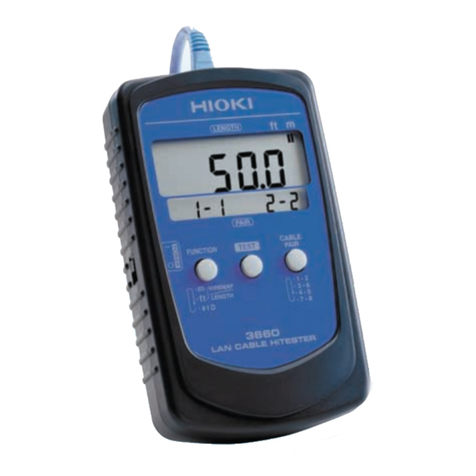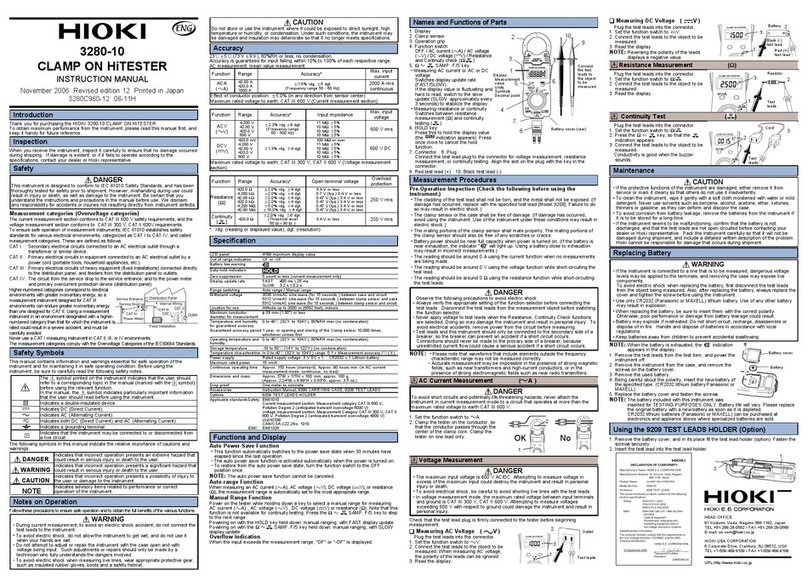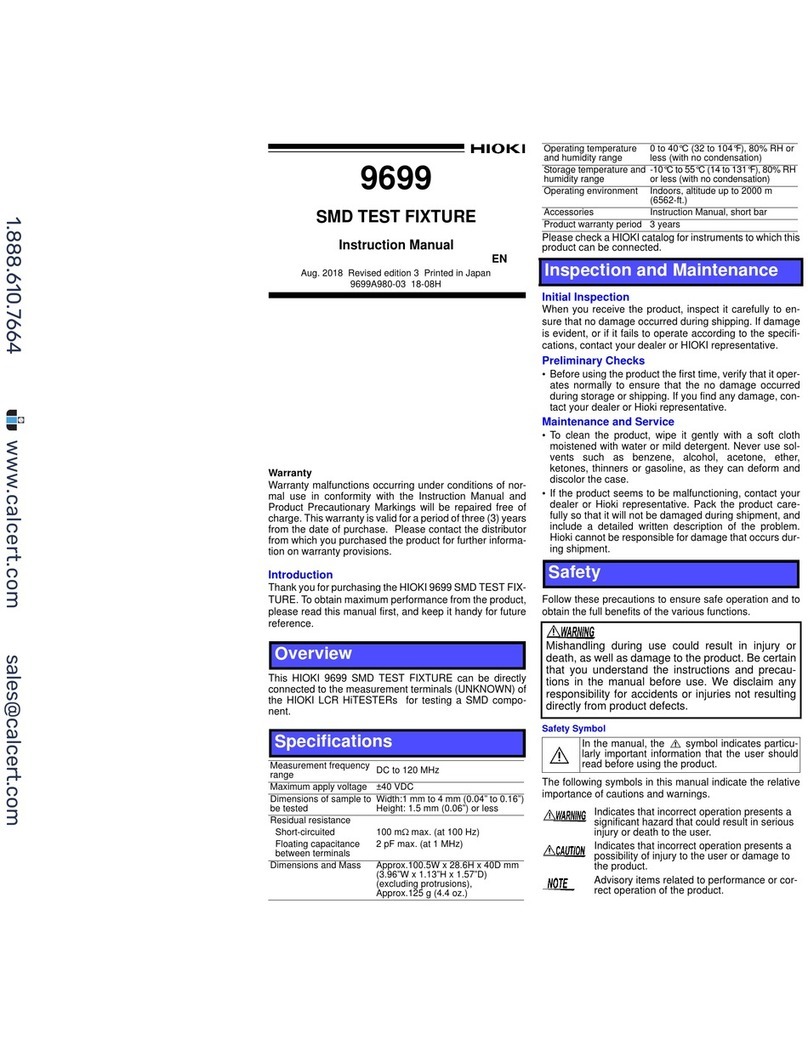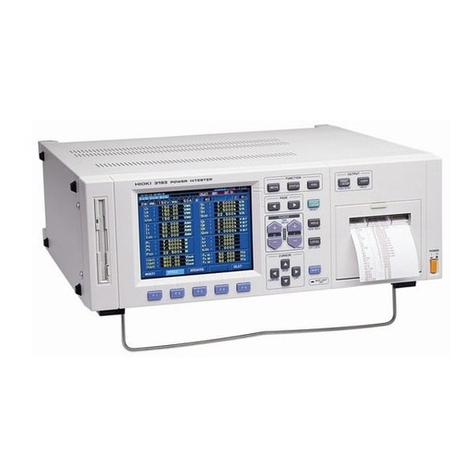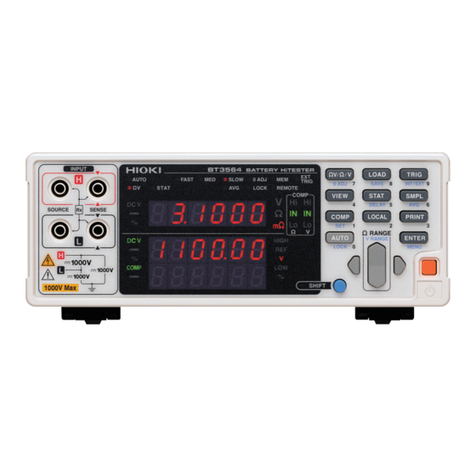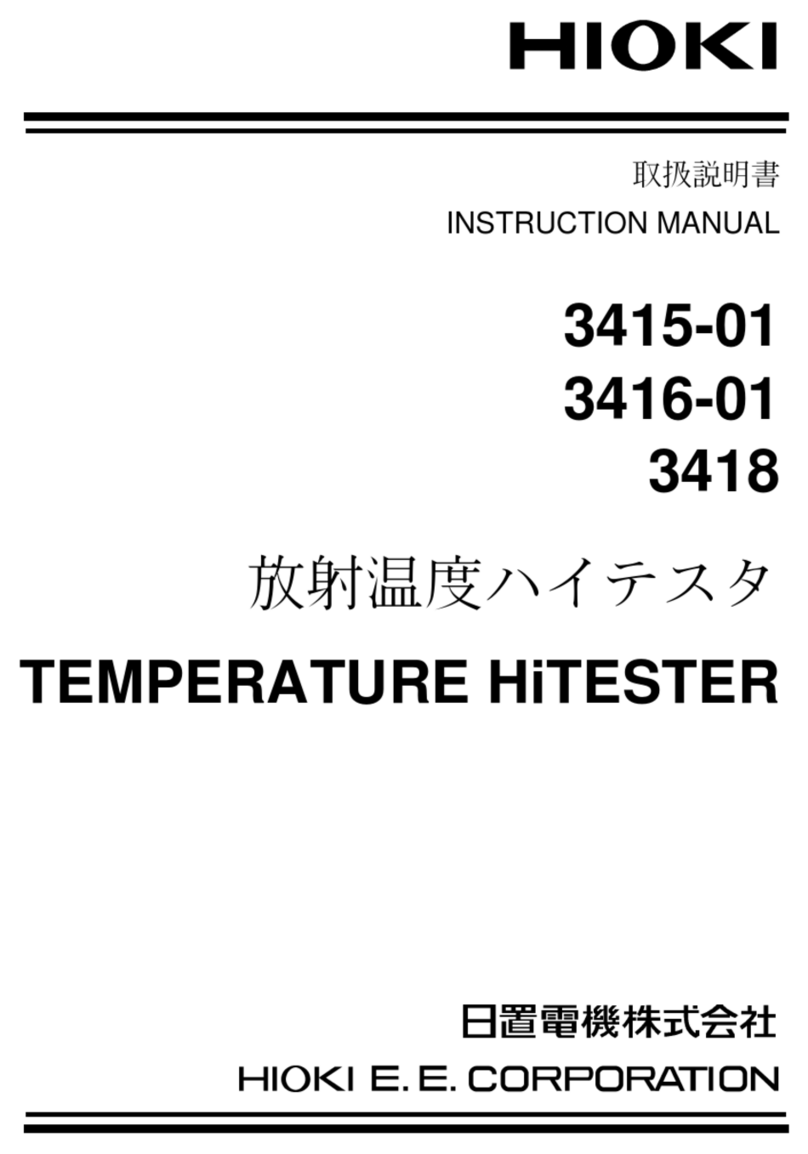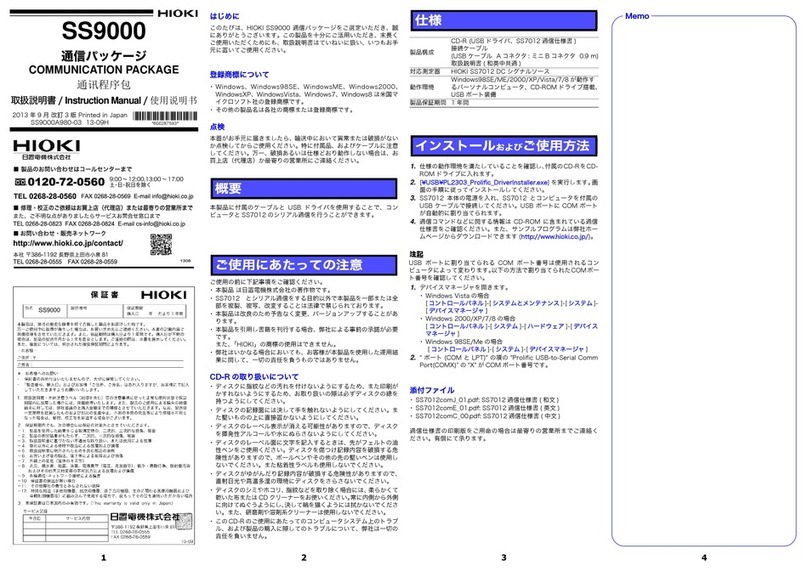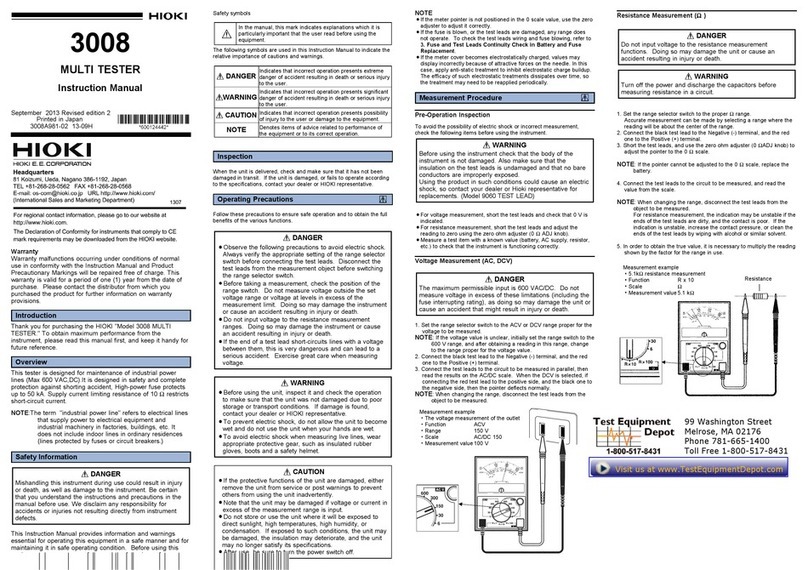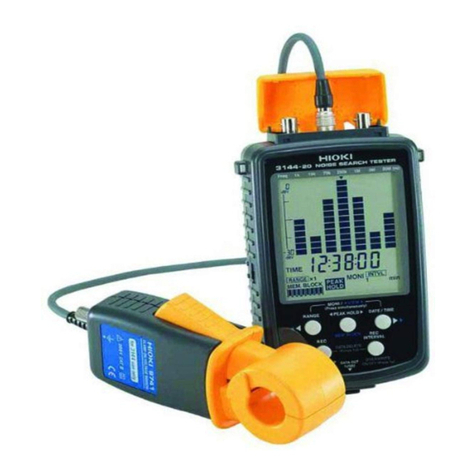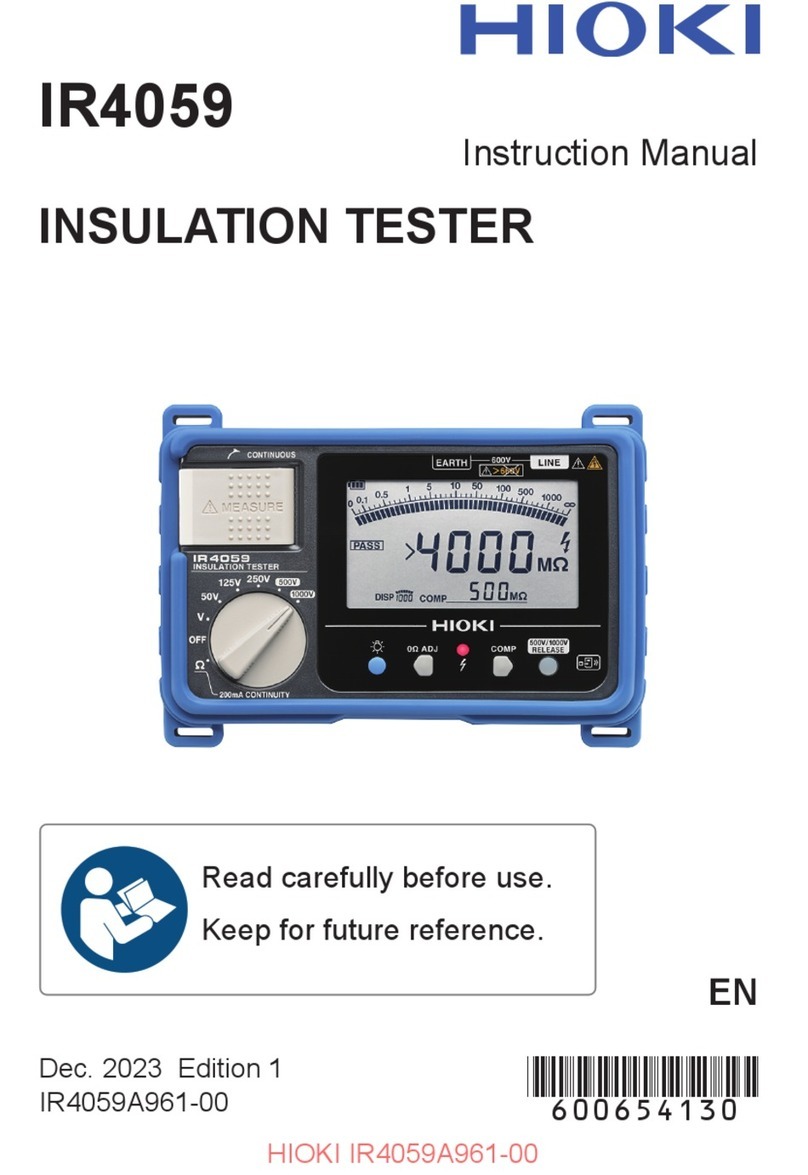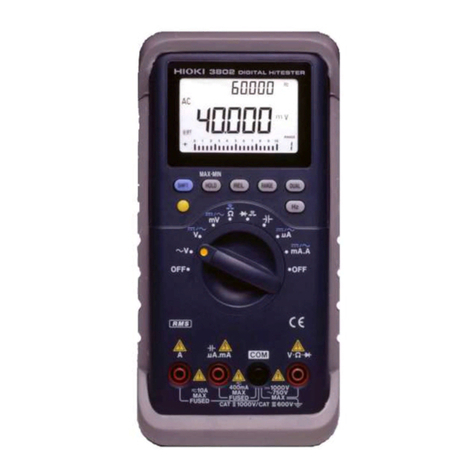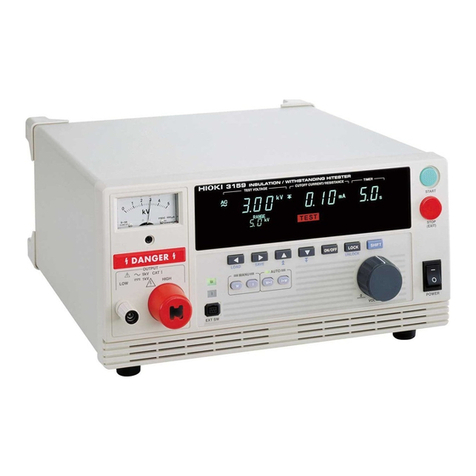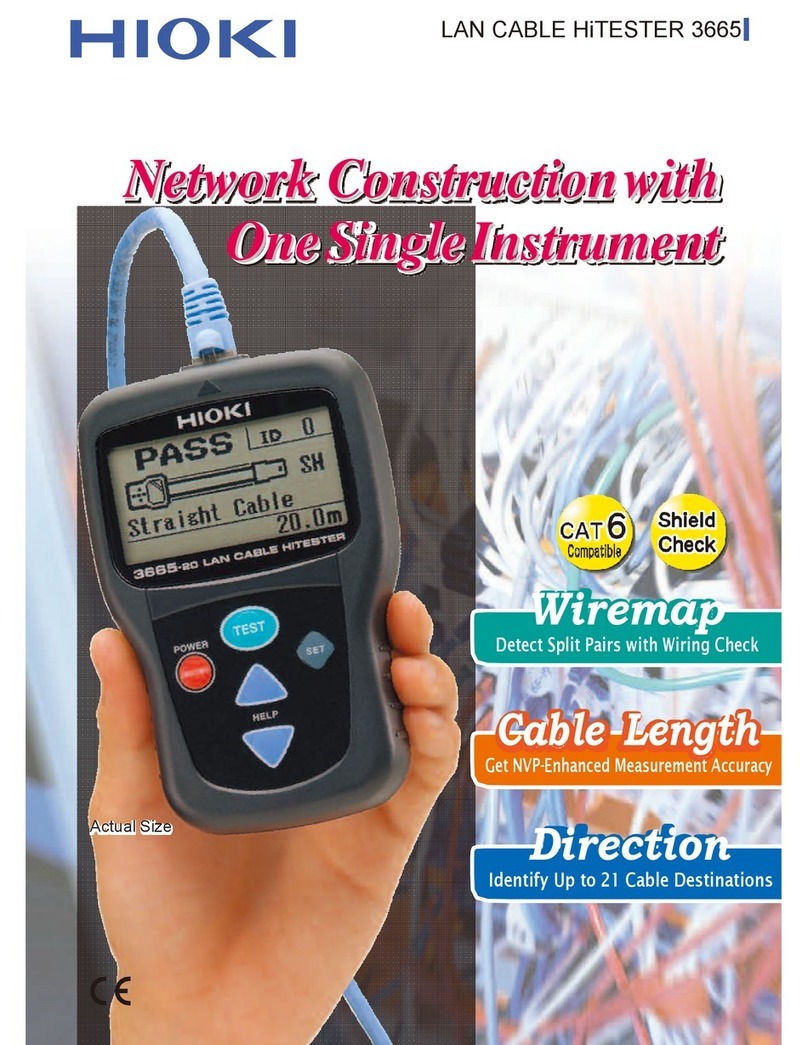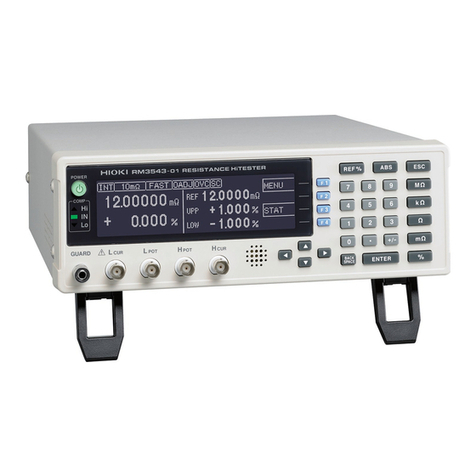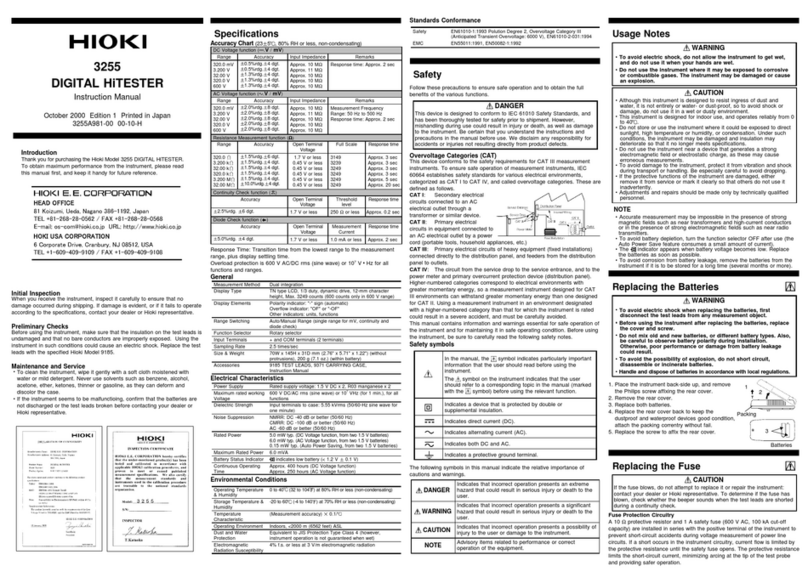
Safety Information
2
This manual contains information and warnings essential for safe operation of
the instrument and for maintaining it in safe operating condition. Before using it,
be sure to carefully read the following safety precautions.
The following symbols in this manual indicate the relative importance of cautions
and warnings.
Safety Information
This instrument is designed to comply with IEC 61010 Safety Standards,
and has been thoroughly tested for safety prior to shipment. However, mis-
handling during use could result in injury or death, as well as damage to
the instrument. Using the instrument in a way not described in this manual
may negate the provided safety features.
Be certain that you understand the instructions and precautions in the
manual before use. We disclaim any responsibility for accidents or injuries
not resulting directly from instrument defects.
Safety Symbols
In the manual, the symbol indicates particularly important information that
the user should read before using the instrument.
The symbol printed on the instrument indicates that the user should refer
to a corresponding topic in the manual (marked with the symbol) before
using the relevant function.
Indicates that dangerous voltage may be present at this terminal.
Indicates a fuse.
Indicates a grounding terminal.
Indicates a ground terminal connected to the chassis of the system.
Indicates DC (Direct Current).
Indicates AC (Alternating Current).
Indicates the ON side of the power switch.
Indicates the OFF side of the power switch.
Indicates that incorrect operation presents an extreme hazard that
could result in serious injury or death to the user.
Indicates that incorrect operation presents a significant hazard that
could result in serious injury or death to the user.
Indicates that incorrect operation presents a possibility of injury to the
user or damage to the instrument.
Indicates advisory items related to performance or correct operation
of the instrument.

